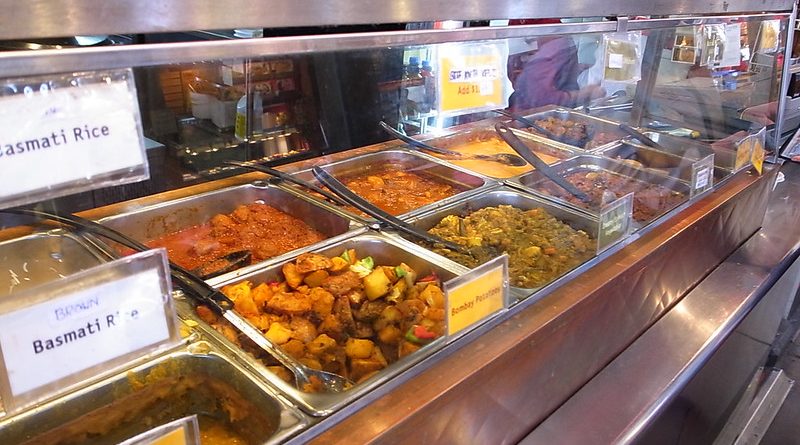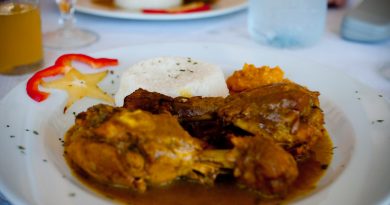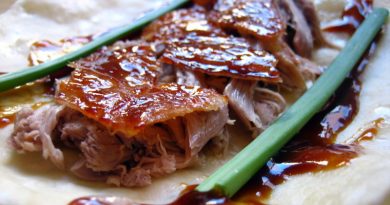The Food of Bengal
Bengali food has inherited a large number of influences, both foreign and South Asian, arising from a turbulent history and strong trade links with many parts of the world.
Originally inhabited by Dravidians and other ethnic groups, and later further settled by the Aryansduring the Gupta era, Bengal fell under the sway of various Muslim rulers from the early thirteenth century onwards, and was then ruled by the British for two centuries (1757-1947).
Bengal, which nowadays takes in Bangladesh ( East Bengal )and the region around the city of Kolkata or Calcutta ( West Bengal) also saw a fair share of immigrants from various parts of the world – most promimently Jews, Chinese and Afghans who settled down in their own distinct communities in and around Kolkata.
Every layer of historical influence endures to the present day; the tribals have traditionally abided as hunter-gatherers in the dense forests of the Sunderbans while the rest of Bengal turned heavily agrarian, farming the extremely fertile Ganges delta for rice, vegetables and cash crops such as jute.
From the culinary point of view, some major historical trends influenced Bengali food.
The Influence of the Hindu widows
In medieval Bengal the treatment of Brahmin widows was much more restrictive than was common elsewhere in India. They led very monastic lives within the household and lived under rigid dietary restrictions. They were usually not allowed any interests but religion and housework, so the kitchen was an important part of their lives – thus traditional Bengali home cuisine was deeply influenced by them. Their ingenuity and skill led to many culinary practices; simple spice combinations, the ability to prepare small quantities (since widows often ate alone) and creative use of the simplest of cooking techniques. Since widows were banned ‘impassioning’ condiments such as onion or garlic, most traditional Bengali recipes don’t use them; this is in stark contrast to the rest of the Indian subcontinent where almost every dish calls for onions and garlic. It has led to generous use of ginger in Bengali curries, both vegetarian and non-vegetarian. Spice combinations tended to be simple, and most expensive ingredients (such as nuts, saffron or cream) were avoided or used very sparingly. The food, however, was anything but simple – preparations were often elaborate to the point of fussiness. It was served with equal elaboration – multiple courses and plenty of formality about what goes with what in what order. This was the traditional food that the Bengali Bhadralok (gentlemen) had at home.
This social structure in Bengal continued until well into the twentieth century; the effect on the cuisine was to preserve many of the dishes and techniques of the old in purest form, isolated from the influence of Mughal or Western methods. In the last few decades, however, widows have become less common and the recipes have moved into the realm of Bengali restaurants around the country.
The Rule of the Nawabs
Bengal (before its partition into eastern and western parts) had been ruled by Muslim rules since the Delhi Sultanate in early 12th century. However, for over five hundred years the center of Muslin rule in Bengal was centered in Dhaka. Trade routes going from Delhi to Dhaka traversed the entire width of today’s West Bengal but seems to have little influence beyond that. West Bengal came under Muslim influence only when Murshid Quli Khan became the governor of Bengal and moved the capital from Dhaka to the newly founded city of Murshidabad in the late 17th century.
From the culinary point of view, a key influence to the food came much later, when Wajid Ali Shah, the last Nawab of Avadh was exiled to Metia Bruz, in the outskirts of Kolkata. He is said to have brought with him hundreds of cooks and masalchis (spice mixers) who, on his death, dissipated into the population, starting restaurants and food carts all over Bengal.
Christianity and other European Influences
The Christian influence came to Bengal a few hundred years after its arrival on the Western borders of India. While the religion propagated in the populace, the region remained isolated from the political and religious centres of Christian India. This meant that people retained many of their local customs and especially food habits. Though the Dutch and the French also had colonies in West Bengal, they have had little impact on Bengal’s culinary habits. That came from the British, and other Western immigrants such as the Baghdadi Jews who set up Kolkata’s famous Jewish Bakeries. West Bengal’s flourishing community of Anglo-Indians formed a once-influential cuisine, but it is now dying along with the reduction in numbers of their communities.
The key culinary influence of the Christian community was the ritual of tea (introduced by the British and now central to Bengali identity), and in Bengal’s snack food traditions. Baking, which was pretty much unknown till the British came along, became widespread. The popularity of baked confectionaries was a direct result of the British popularising the celebration of Christmas. The Jewish community, though always tiny in numbers, picked up the trend and made it hugely popular to the masses – now every railway station in West Bengal serves puff pastries to go with tea to millions of commuters across the state. Chops and cutlets, once British in origin but now firmly Bengali, are served every day in every little shack. The pound cake is a treat every kid has grown up stealing. Kolkata’s big Jewish bakeries are dead or dying, but their influence is everywhere.
Bengali food today has some broad (though not so distinct) variations – Traditional, Mughal, Anglo-Indian and Chinese.
East Bengal
In Bangladesh (formerly East Bengal), the culinary style developed rather independently; it was not greatly influenced by the rest of India and Southeast Asia because of the difficult geography of the Ganges delta. Four characteristics stand out: fresh-water fish, beef(only for Muslims), the extensive use of parboiled rice and mustard oil. Đal is also astaple. Spices are used sparingly, and the methods of preparation are relatively simple – steaming, frying or stewing. Floods are common in the region, so there is an extensive use of root vegetables and dried fish (shuţki). Milk and dairy products, so widely used in the neighboring India, are not as common here; the geography prevents large scale breeding of cows, thus making dairy an expensive indulgence. Notably, hardly any food calls for curd or ghee. However, sweets do contain milk and dairy products as well as jaggery and rice paste.
West Bengal
In western parts of Bengal, more connected with the rest of India and dominated by the megacity of Kolkata since the late eighteenth century, a separate culinary style emerged. The delta is thinner there, with fewer rivers and more open plains. There is significant commerce with the rest of India, leading to a flow of spices, ingredients and techniques. The food is much richer with various spices, the presentations are more elaborate and a significant feature of the cuisine is a vast array of sweets based on milk and sugar – the result of both better supply and the influence of traders from the milk belts of Gujarat and Benares. While fresh-water fish is still common, mutton is more common among the Muslim population than beef and dried fish. Wheat makes its appearance alongside rice, in different types of breads such as luchi, kochuriand pôroţa. Mustard paste is extensively used, and so is mustard oil. There’s a greater use of coconut, both in cooking and in desserts.
Prosperity and urbanization also led to the widespread use of professional cooks who introduced complex spice mixtures and more elaborate sauces, along with techniques such as roasting or braising. Also introduced around this time, probably as a consequence of increased urbanization, was a whole new class of snack foods. These snack foods are most often consumed with evening tea. The tea-time ritual was probably inspired by the British, but the snacks bear the stamp of the substantial Marwari population in Kolkata – chaţ, kachori, samosa, phuluri and the ever-popular jhal-muri.
Partition
The partition of India in 1947 resulted in a large migration of people to and from present-day Bangladesh, resulting in a much stronger divide along religious lines. Bangladesh today shows a much greater Muslim influence than West Bengal.
The influence on the food was top-down, and more gradual than in many other parts of India. This led to a unique cuisine where even the common man ate the dishes of the royal court, such as biryani, korma and bhuna. The influence was reinforced in the Raj era, when Kolkata became the place of refuge for many prominent exiled Nawabs, especially the family of Tipu Sultan from Mysore and Wajid Ali Shah, the ousted Nawab of Awadh. The exiles brought with them hundreds of cooks and masalchis (spice mixers), and as their royal patronage and wealth diminished, they interspersed into the local population. These highly accomplished cooks came with the knowledge of a very wide range of spices (most notably jafran saffron and mace), the extensive use of ghee as a method of cooking, and special ways of marinating meats.
In Bangladesh, this food has over time become the staple food of the populace. In West Bengal, however, this has remained more than the other categories, the food of professional chefs; the best examples are still available at restaurants. Specialties include chap (ribs slow cooked on a tawa), rezala (meat in a thin yogurt and cardamom gravy) and the famous kathi roll (kebabs in a wrap). The local population absorbed some of the ingredients and techniques into their daily food, resulting in meat-based varieties of many traditional vegetarian dishes, but by and large the foods remained distinct.
The Mughal influence is most distinct in preparations involving meat especially mutton. However, even chicken and other meats became more prevalent. The influence was also seen in desserts; traditional desserts were based on rice pastes and jaggery but under the Mughal influence moved towards significantly increased use of milk, cream and sugar along with expensive spices such as cardamom and saffron.
Raj cuisine
Anglo-Indian food isn’t purely the influence of the British; Bengal was once the home of a French colony, and also hosted populations of Portuguese, Dutch, Armenians and Syrians. These collective western influences are seen in the foods created to satisfy the tastes of the western rulers. The result is a unique cuisine, local ingredients adapted to French and Italian cooking techniques—characterized by creamy sauces, the restrained use of spices and new techniques such as baking.
English and Jewish bakers such as Flury’s and Nahoum’s dominated the confectionery industry which migrated from British tables to everyday Bengali ones, resulting in unique creations such as the pêţis (savory turnovers, from the English “pasty”). Another enduring contribution to Bengali cuisine is pau ruţi, or Western-style bread. Raj-era cuisine lives on especially in the variety of finger foods popularized in the ‘pucca’ clubs of Kolkata, such as mutton chop, kabiraji cutlet or fish orly.
The British also influenced food in a somewhat different way. Many British families in India hired local cooks, and through them discovered local foods. The foods had to be toned down or modified to suit the tastes of the ‘memsahibs’. The most distinct influence is seen in the desserts, many of which were created specifically to satisfy the British – most notably the very popular sweet leđikeni named after the first Vicereine Lady Canning; it is a derivative of the pantua created for an event hosted by her.
Chinese food
The Chinese of Kolkata originally settled into a village called Achipur south of Kolkata in the late 18th century, later moving into the city and finally into its present home in Tangra at the eastern edge of Kolkata, which still houses over 100,000 ethnic Chinese. No other part of the Indian subcontinent has any significant Chinese population.
The Chinese of Kolkata form a substantial and successful community with a distinct identity. With this identity came Chinese food, available at almost every street corner in Kolkata. They were mostly Cantonese tradesmen and sailors, bringing with them aji-no-moto (monosodium glutamate) and sweet corn. The cuisine is characterized as much by what is missing – mushrooms, for instance, are not found in Bengal – as by what is there, such as a far greater use of pork than any of the other cuisines.
As the Chinese opened restaurants for Bengalis, they spiced up the bland Cantonese sauces with sliced chillies and hot sauces, creating unique dishes such as Chicken sweet corn soup, Chinese fried rice, Chowmein (noodles), Chilli Chicken and Manchurian dishes.
Indian Chinese food was given a second boost when a large number of Tibetans migrated into Indian Territory, when China annexed Tibet. Tibetans brought with them their own delicacies to add to this genre, such as the very popular momo (a kind of dumpling) or thukpa (a hearty noodle soup). Tibetans and Nepali immigrants also found ready employment in kitchens as ‘Chinese’ cooks because of their looks, and helped power the millions of eateries that serve this unique fusion on every street in Kolkata.
Bangladesh also hosts a large number of Chinese restaurants. In Dhaka, the phrase Chainiz khaoa(literally ‘to eat Chinese food’) often simply means ‘to eat out (at a restaurant)’, as Chinese cuisine was the first widely-available food in Dhaka eateries. As with Indian Chinese food, Chinese food in Bangladesh has evolved much from its Cantonese roots, with greater usage of chili and other spices native to Bengal.
The influence of this unique cuisine cannot be overstated; it’s available in every town in India and Bangladesh as Chinese food. Bengali immigrants to other countries have started carrying this abroad as well; Indian Chinese restaurants have appeared in many places in the United States
Street Foods
In Calcutta the cheap eating houses which were in abundance 30 years ago have disappeared. The street vendors who sold only raw commodities in the past now sell prepared foods as well. Small shops have been replaced by transportable stands. Street foods are adopted because they are inexpensive, the taste is acceptable and they are conveniently sold wherever people congregate (e.g. schools, marketplaces, railway stations and office centres).
In Calcutta the street food trade has shed its disorganized, lower-class image and is becoming a viable, important informal-sector industry. The activity provides income for people who would otherwise be unemployed, since entering the street food business only requires a few rupees and a location. Furthermore, street foods help meet the nutritional needs of a significant portion of the population.




